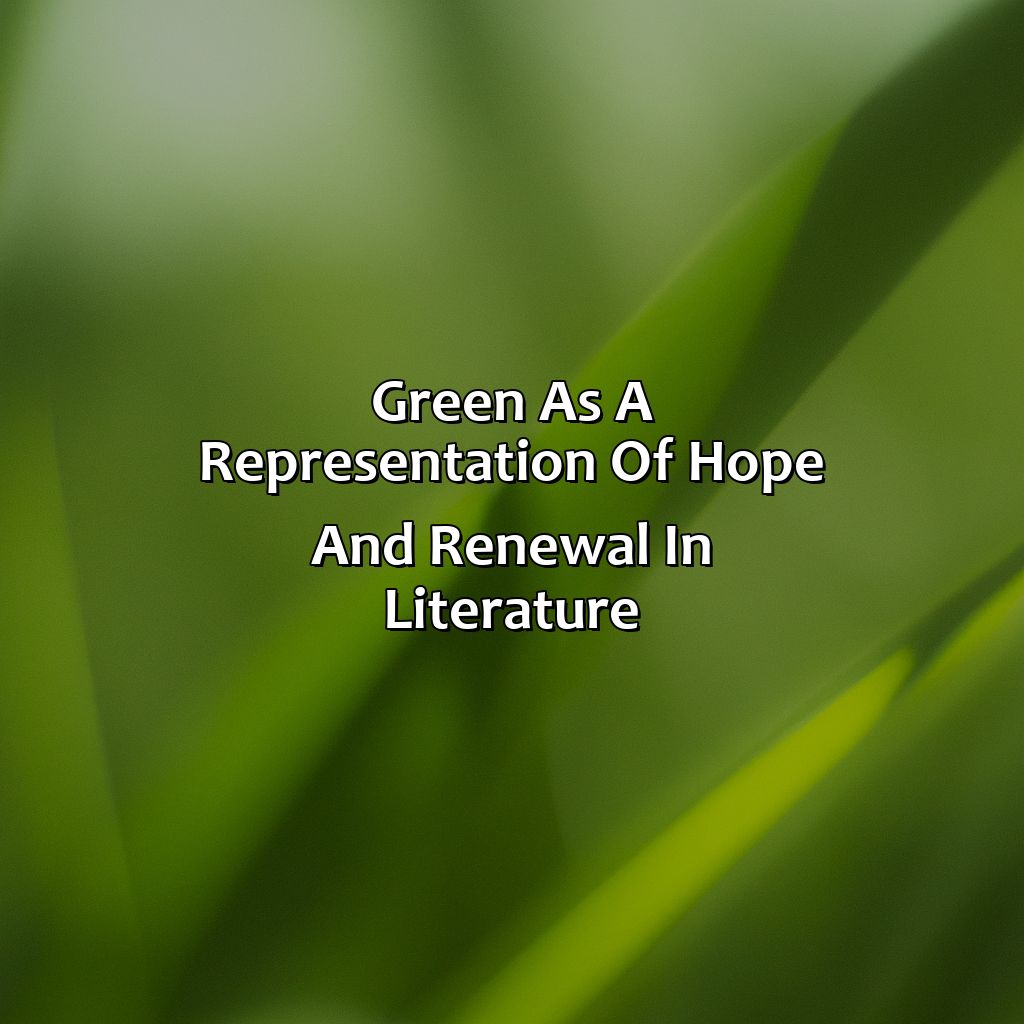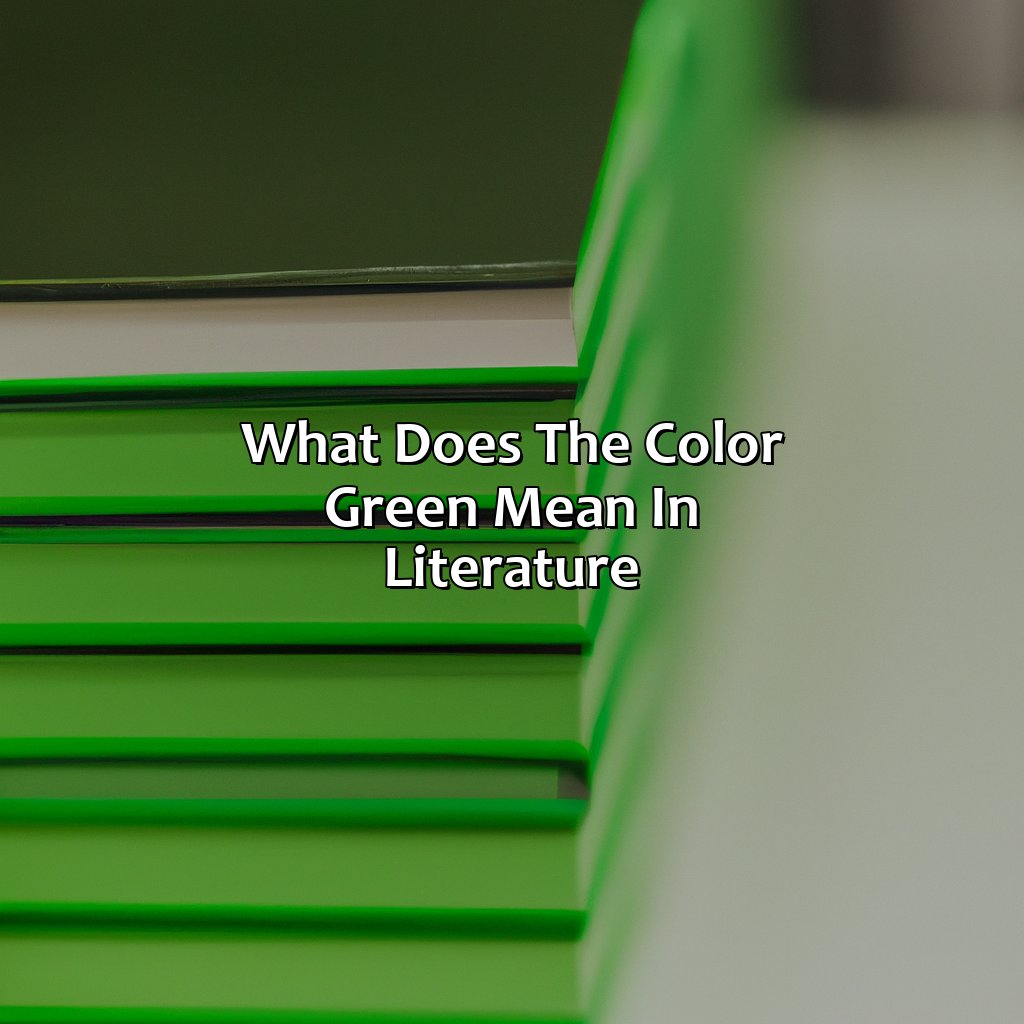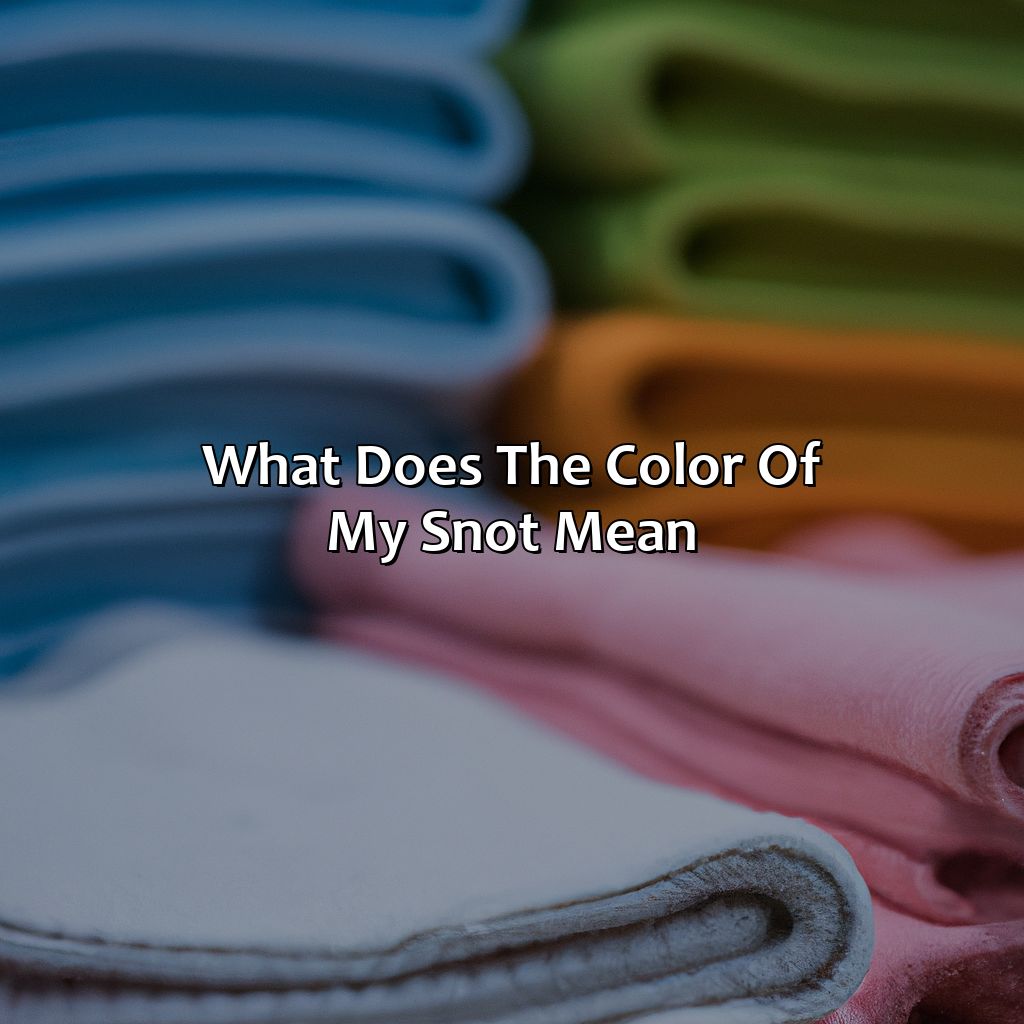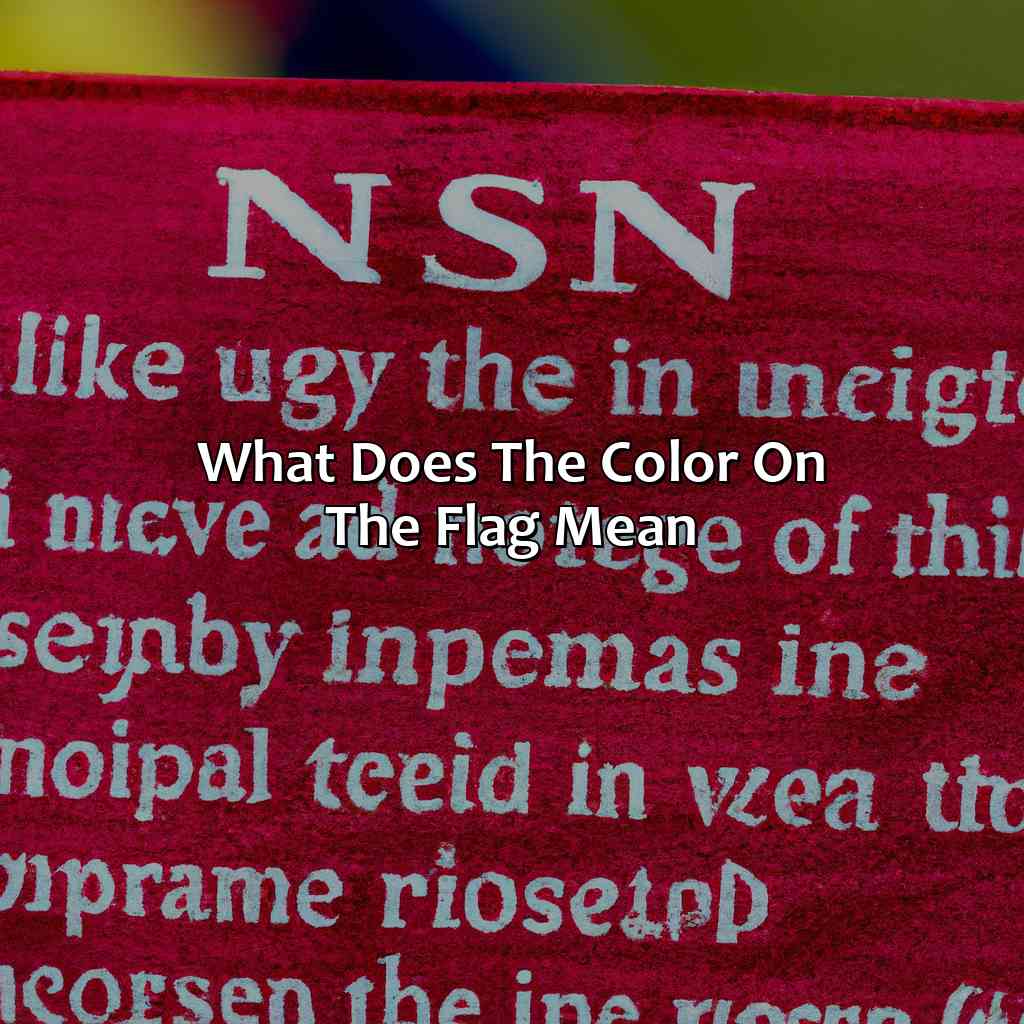Key takeaway:
- Green connotes a range of positive attributes in literature, from growth and renewal to tranquility and harmony. As a symbol of nature, it is often associated with environmentalism and sustainability.
- The cultural and historic meanings surrounding the color green are varied and complex, ranging from Irish culture to material wealth and prosperity.
- Green can also have negative connotations in literature, such as jealousy and envy. However, it is important to consider the context in which it is used, as the symbolic meaning of green can differ depending on the text or culture being examined.
The Significance of the Color Green in Literature

Photo Credits: colorscombo.com by Daniel Allen
To understand green’s deep symbolism in literature, we explore its significance in three sections:
- Firstly, an intro to green’s cultural and historical connotations.
- Secondly, green’s use as a symbol in literature.
- And lastly, examples of green representing nature and growth.
Green often conveys themes such as harmony, renewal, hope, and sustainability. We’ll analyze the literary devices and stylistic choices used to communicate green’s meaning.
Introduction to the Color Green
Green, a color that has been used throughout history in art, literature, and culture. When it comes to literature, green has been used as both a positive and negative symbol, representing hope, growth, nature, envy, and jealousy. In literature, the color green signifies renewal and new beginnings in both life and nature. The use of this color is significant in creating imagery within various literary works. Through the exploration of this color in literature we can learn how it is used by writers to convey a range of emotions that are associated with it.
Green: not just a color, but a cultural and historical phenomenon.
The Cultural and Historical Connotations of Green
Green has been a prominent color in cultural and historical contexts. It is often linked to growth, fertility, and life. Green has also been associated with the environment, natural world, and vegetation. In many religions, green is seen as a symbol of renewal, rebirth, and resurrection. From ancient traditions to modern times, the cultural and historical connotations of green have remained significant.
Throughout history, green gemstones such as emeralds were sought after for their rarity and beauty. They were often associated with wealth and status symbols among the elite classes. Green pigment was made from various substances including malachite or copper for painting artwork.
The symbolism of green varies among cultures as well. In Islamic traditions, green symbolizes paradise while in Europe it is often connected to rebirth after winter months. The Celtic tradition views the color as symbolic of Mother Earth’s fertility.
Even today, many businesses use the color green in their branding for environmental associations and creating feelings of growth and prosperity.
Understanding the cultural connotations can lead to appreciation for its symbolism in literature as it carries a range of symbolic meanings – both positive and negative aspects.
By exploring the cultural significance of the color green deeply intertwined historically with human cultures helps us prepare ourselves better when dealing with literary pieces that incorporate this aspect into them.
Across major religions such as Islam or Irish folklore exist diverse interpretations appreciated still today in many countries worldwide with deep-seated connections returning into antiquity alike. Hence an insightful exploration on this topic will provide readers a fascinating grasp on how authors use it metaphorically.
Get inspired by yellowing foliage during autumn & exuberant hue spring welcomes? The cultural & historical connotations of #Green along with its versatile symbolism captured within pages can implore our imagination about nature but also at human archetypes like hope or envy. If you thought green was just a colour, think again – in literature, it’s a symbol full of growth, envy, and hope.
The Use of Green in Literature as a Symbol
Green in literature has long been used as a potent symbol of various emotions and ideas. This hue is often used to represent nature’s growth, envy and jealousy, or hope and renewal. The use of green in literature as a symbol reflects its cultural significance, historical connotations, and association with nature. Literary works frequently utilize the color green to convey powerful themes, which helps readers better understand the text’s underlying message.
Authors have employed the use of green in their works to signify an array of emotions. Green is associated with healing as it signifies life at its most primal level, thus personifying natural balance. From gardens to fields, flora represents growth of all kinds. For instance, Miguel de Cervantes’ Don Quixote features numerous gardens that are portrayed as symbols of nobility and virtue. In essence, green can be interpreted as a representation of an endless cycle of new beginnings – starting afresh.
Green’s negative connotations are prominent in literature where it is associated with envy and jealousy. William Shakespeare incited such notions through his work when he described envious characters who were consumed by the pureness of jealousy; “Misery acquaints a man with strange bedfellows” (The Tempest Act 2 Scene II). The sly characterizations using different elements like snakes displaying malevolence or downright sinfulness are demonstrated through hues like dark greens signifying conspiracies.
While the color green may symbolize negativity at times, it is also used to represent hope and renewal in literature. It marks revivals after terrible droughts or plagues which give birth to magnificent eras where poverty-stricken cities turn into thriving landscapes full of opportunity. It was Charles Dickens’ A Tale Of Two Cities that showcased hope being rekindled by resurrection using phrases like “recalled to life.” In contrast yet again Shakespeare’s play Othello shows how even those hell-bent on revenge can be humanised when Desdemona’s handkerchief symbolises faith and hope.
A true fact- A significant historic event that involved colors is the French Revolution, which saw citizens take up blue jackets, white trousers, and red hats to identify themselves as they were storming the Bastille.
Green in literature is not just a color, it’s a metaphor for growth and rebirth, reminding us that life is always renewing itself, like a lawn in spring.
Examples of Green Symbolizing Nature and Growth in Literature
Green is a common color associated with nature and growth in literature. It acts as a symbol for the natural world and signifies life, vitality, and fertility. Several writers have used green in their works to manipulate their readers’ emotions and convey unique themes.
In literary works, the color green often describes places or things related to nature, such as trees, grass, leaves, and shrubs. In A Midsummer Night’s Dream by Shakespeare, the forest is described as being green and lush. Similarly, in The Great Gatsby by F. Scott Fitzgerald, Nick observes how “the front windows of [Gatsby’s] house are blazing with light…and his lawn twinkled like diamond.” In both instances, green is used to create vivid imagery of the natural world.
Another way in which green is utilized by authors is as a representation of growth or development. For instance, The Giving Tree by Shel Silverstein portrays the importance of nurturing relationships with others through an apple tree that gives everything it has to help out a young boy over time until it eventually becomes a stump.
Despite the positive connotations of green in literature as a symbol for nature and growth, there can also be negative associations with this color when it represents envy or jealousy. This duality highlights how authors can use color symbolism to express different perspectives depending on their intentions.
Examples of green symbolizing nature and growth in literature are common because this color evokes feelings of life and vitality. Writers frequently use the shade to represent various themes that involve nature or self-discovery where renewal or rebirth plays a significant role in their plots. Additionally, green has been used negatively to represent envy or jealousy – which highlights how authors can manipulate colors into meaning certain things depending on their intended message.
From envy and jealousy to Irish culture and St. Patrick’s Day, green takes on a negative connotation in literature that is ripe for literary analysis.
Green as a Representation of Envy and Jealousy in Literature

Photo Credits: colorscombo.com by Jerry Martin
Analyzing envy and jealousy in literature involves exploring green as a negative symbol, linked to certain characters. Examples of green representing envy and jealousy are plentiful. In Irish culture, green has a special place. It’s used in literary analysis as a metaphor and symbol, through imagery and other literary elements, such as poetic devices, stylistic techniques and rhetoric. This section will provide a deeper understanding of these topics.
Exploration of Green as a Negative Symbol in Literature
Green is often used in literature to represent negative emotions such as envy and jealousy. The exploration of green as a negative symbol in literature involves analyzing characters associated with the color green and examining the connotations that come with it. Through this exploration, authors are able to paint their characters as possessing these negative attributes without explicitly stating them.
Characters associated with the color green often carry negative traits such as envy, greed, and jealousy. In literature, where visual representation is limited, authors have developed an association between this color and certain behaviors or feelings conducted by these individuals. The use of this association can be seen in some classic literary works such as Shakespeare’s “Othello,” where Iago is characterized with wearing clothes in shades of green.
The exploration of green as a negative symbol in literature also values emotional complexities within an individual or story and can illuminate themes related to fear or loss. As readers engage with literary work through layers of exclusion and thought-provoking details, taking note of how symbolism influences interpretation gives new angles for understanding texts.
Literary experts suggest that when exploring green as a negative symbol, it should be acknowledged that too much of something good will always lead to its opposite. This repetition offers smooth ordering functions concerning the array spanned over varying categories owing to incongruent similarities found in various domains. One must interpret multiple aspects before arriving at clear verdict regarding whether the presentation is meant to be taken positively or negatively.
Green characters in literature tend to be envious and deceitful, but hey, at least they’re not blue.
Analysis of Characters Associated with the Color Green
In literature, the color green is often used as a symbol to represent various themes and emotions. One such use is the analysis of characters associated with the color green. These characters are often linked to envy or jealousy, where green represents negativity. Their thoughts, actions and motivations are explored in detail to understand their impact on the story.
The portrayal of these characters depends on the context of the story and their development. They can be either protagonists or antagonists, causing chaos or being victims themselves. Using NLP techniques, analyzing their language patterns and motivations helps readers understand their role in the narrative.
Moreover, this semantic association of green with negative emotions has changed over time. Contemporary literature now portrays green with more positive symbolism, like hope and renewal. The complexity of these characters suggests that analysis must go beyond symbolism alone.
In history, this usage can be traced back to early literary works such as Shakespeare’s “Othello” where jealousy represented by green eyes caused Othello’s downfall. This connection between colors and emotions has had a lasting impact on literature, influencing writers till today.
Green envy runs rampant in these literary works, where jealousy takes root and blossoms like a poisonous weed.
Examples of Green Symbolizing Jealousy and Envy in Literature
Green representing jealousy and envy is another significant aspect explored in literature. It is fascinating how green acquires diverse connotations, from positive to negative, signifying different human emotions. The following examples of green symbolizing jealousy and envy in literature demonstrate this versatility.
- In Shakespeare’s play ‘Othello,’ the protagonist Iago frequently describes the character Cassio as having a “daily beauty in his life that makes me ugly.” This statement highlights Iago’s frustration with Cassio’s success and status which leads him on a path of betrayal and revenge, ultimately leading to his downfall.
- In F. Scott Fitzgerald’s novel ‘The Great Gatsby,’ the color green emerges as a symbol of wealth, but also jealousy and envy. Daisy Buchanan’s voice was described as ‘full of money’ throughout the book, while her husband Tom Buchanan wears a green shirt while having an affair with Myrtle Wilson.
- An example from Nathaniel Hawthorne’s ‘The Scarlet Letter’ is Reverend Arthur Dimmesdale hiding his sin and guilt behind his serene demeanor, often depicted surrounded by nature represented by lush forests and abundant flowers shaded with green.
- The character Edmund from Jane Austen’s novel ‘Mansfield Park’ is often associated with green, portraying his jealous nature towards others’ achievements and advancements. His deceitful actions ruin people when they threaten to take away what he desires.
These examples showcase how authors use Green to portray complex human emotions such as envy, greed and lust for power while contrasting themes of growth or new beginnings. Color symbolism adds depth to literary texts where they are integrated seamlessly.
Pro Tip: By understanding these symbolic references in literature correctly can offer insight into an author’s message and themes conveyed through subtle symbolism. Reading beyond words can be essential in unlocking deeper interpretations of literary works.
Green in literature is a refreshing symbol of hope and renewal, like a cool glass of water on a hot summer day.
Green as a Representation of Hope and Renewal in Literature

Photo Credits: colorscombo.com by Philip Smith
Analyzing the theme of hope and renewal in literature by using the color green is a common practice. Green stands for vitality, new beginnings, balance, and peace. It is a great symbol for renewal and hope. This essay has two sections that focus on green’s representation of starting anew and green’s link to hope. Both of these sections highlight the importance of the color green in literature as a reminder of the hope and renewal found in the natural world.
One of the most common representations of green in literature is its association with starting anew. In many literary works, green symbolizes new beginnings and the start of a new life. This symbolism is often used in literature to convey a sense of hope and renewal.
For example, in F. Scott Fitzgerald’s classic novel The Great Gatsby, the green light at the end of Daisy’s dock represents Gatsby’s hopes and dreams for a new life. The green light serves as a symbol of renewal for Gatsby and his quest to start anew with Daisy by his side.
Green is also closely linked to the theme of hope in literature. The color green is often used to represent a positive outlook and a belief in a bright future. This symbolism can be seen in many different literary works throughout history.
One example is in J.R.R. Tolkien’s The Lord of the Rings, where the character Sam is often associated with the color green. Sam’s connection to the color green represents his unwavering hope and belief that everything will turn out for the best in the end. This is particularly evident in Sam’s relationship with Frodo and his constant encouragement and support throughout their journey.
Many literary works use the color green as a symbol of renewal and hope. In addition to The Great Gatsby and The Lord of the Rings, other examples include:
- William Shakespeare’s Sonnet 18, which compares a loved one to a summer’s day and ends with the line “So long as men can breathe or eyes can see, So long lives this, and this gives life to thee.”
- Robert Frost’s poem “Birches,” which concludes with the lines “So was I once myself a swinger of birches. And so I dream of going back to be. It’s when I’m weary of considerations, And life is too much like a pathless wood.”
- Alice Walker’s novel The Color Purple, where the color green is used to symbolize growth and change in the character of Celie.
The Use of Green to Symbolize New Beginnings
Green’s usage as a symbol for a new beginning is quite popular in literary works. In literature, green represents growth, vitality, and renewal – making it an ideal emblematic color of beginnings. A lot of writers associate green with the start of something new because of its association with nature – a process that keeps repeating itself every year.
The representation of green as the symbol of a new beginning is present in various literary works in different forms. For example, authors often describe newborns’ eyes as green to depict freshness and potential. They also use lush greenery to illustrate renewed life after destruction and emphasize characters’ transformation through the color green clothing.
A unique way to showcase green’s association with renewal occurs in folk tales where characters must follow a path marked by green and emerge rejuvenated from it. These elements create an alluring imagery for readers that stimulate their creative imagination.
One famous example of Green’s symbolism for new beginnings happened in Arthurian legends. They speak about knights looking for both red and green branches from trees to cure King Henry’s illness. The choice between two alternatives became Knights’ most important quest, which shows how significant Green has been in mythology.
Overall, literary works over ages have relied upon the power of Green color to represent new beginnings artistic relevance- not just symbolically but also by presenting it as an enriching feature that invites readers deep into stories full of emotions, hopes and regrets. Green brings a ray of hope to literature’s darkest moments, illuminating a path towards renewal and reinvention.
Exploration of Green as a Harbinger of Hope
Green Connotes Hope in Literature
The color green has been widely used as a symbol of hope in literature, signifying the possibility of new beginnings and positive change. It is significant to note that the use of green as a harbinger of hope usually involves some form of natural imagery like plants or trees. Through its association with growth and nature, green represents the promise of life and renewal.
Many authors have extensively explored this connection between green and hope, using it to invoke feelings of optimism and inspiration in readers. Green has also been used to denote progress, foretelling an eventual end to strife or conflict. Its tranquil appearance further strengthens its power as a beacon of hope for readers who seek respite from life’s difficulties.
Furthermore, it is worthwhile noting that characters associated with the color green are often perceived as catalysts for transformative change within narratives. They help inspire messages about resilience and evolution – exemplified in such popular works as The Great Gatsby and Little Women.
As much now as ever before, exploring how this important literary symbol connotes hope via nature remains imperative across disciplines. With many environmental threats still plaguing our world today, harnessing these inspirational aspects can help promote sustainable living to generations yet unborn.
When life gives you lemons, paint them green and see them as a symbol of hope and renewal in literature.
Examples of Green Symbolizing Hope and Renewal in Literature
Green as a symbol of hope and renewal in literature is significant. The use of green in literature has inspired many authors to create remarkable stories that represent nature and growth, emphasizing the beauty of this color.
- Great Gatsby’s “green light” symbolizes Jay Gatsby’s hope for a brighter future with Daisy, representing new beginnings.
- In The Secret Garden, the garden transforms from a neglected, lifeless wasteland into a flourishing oasis with vibrant greenery.
- The classic novel To Kill a Mockingbird uses green to convey a sense of growth and positive change in Scout Finch’s perception of her world.
- In William Wordsworth’s poem ‘Lines Composed A Few Miles Above Tintern Abbey’, nature is described as transformative and renewing, with vivid greens that give rise to newfound tranquility.
Green as an emblem of hope represents new beginnings that arise out of difficult circumstances. In literature, green often represents hope for the future, portraying optimism and renewal. Examples of Green Symbolizing Hope and Renewal in Literature showcase how authors have conveyed messages through colors so impactful that they affect readers’ emotions.
Indeed, Green’s representation context varies in literature; however, its significance remains constant. Green in literature is as versatile as a chameleon, transforming from symbolizing envy and jealousy to representing hope and renewal, proving that this color is a literary powerhouse.
Recap of the Significance of Green in Literature
Looking back at the use of green in literature reveals its multifaceted nature, as it can symbolize both positive and negative emotions or ideas. For instance, green has been employed to embody hope and new beginnings, impacting readers powerfully and creating a sense of renewal in literary works. Additionally, green has been associated with envy and jealousy, and some of the characters have been depicted with these aspects. Overall, it’s clear that the significance of green in literature culminates from its versatile usage to communicate more than one meaning.
Green may be associated with envy and hope, but in literature, it’s a chameleon, adapting to fit any symbolic role thrown its way.
The Multifaceted Nature of Green as a Symbol in Literature
Green is a versatile color that holds significant value as a symbol in literature. Its multifaceted nature enables it to depict a range of representations, including growth and envy. In literature, authors use green to convey various meanings, from hope and renewal to negative emotions such as jealousy. The multifaceted nature of green as a symbol in literature allows authors to communicate their message in an effective manner without explicitly stating the meaning behind it. Because of this, the utilization of the multifaceted nature of green as a symbol in literature will continue to have enduring relevance.
In addition to its multiple meanings, green provides depth and an added dimension to literary works. It allows characters’ personalities to be indirectly revealed by subtle associations with the color, such as clues regarding their personality or motivation. For example, an individual known for their jealousy might commonly appear in clothing or surroundings saturated with various shades of green. Different hues offer different connotations; lighter greens might evoke freshness and new beginnings while darker greens might evoke envy and deceit.
The multifaceted nature of green has been explored throughout literary history with tales varying from Shakespeare’s Othello, Dickens’s Great Expectations to contemporary young adult novels like Twilight wherein Edward Cullen wears “an open-collared black shirt”.
Pro Tip: Understanding the nuances behind the many meanings of green provides readers with greater insight into deeper themes within literary works where cohesion between characters or setting and symbolic layering are at play – ultimately deepening one’s enjoyment and appreciation for literature.
Reflections on the Lasting Impact of Green in Literature
Green has a lasting impact on literature, serving as a multifaceted symbol representing hope, envy, and nature. Its cultural and historical connotations are thought-provoking, inspiring writers to use the color in their works. Readers have seen green signify new beginnings or greed in various literary works such as The Great Gatsby and The Secret Garden.
In summary, reflections on the lasting impact of green in literature showcase how this color continues to provide rich material for writers to interpret it in fresh and new ways.
Exploring the significance of green’s symbolism, one can see how its complex representation enriches any narrative. Hope and renewal are exemplified through the color’s evocation of growth. On the other hand, envy is conveyed by green’s association with greed and jealousy. These nuanced underlying meanings create captivating stories that transcend time.
Finally, when reflecting on the lasting impact of green in literature, it is essential to note that its symbolic power extends beyond just prose; poems, plays, and even visual arts feature it prominently. To best utilize the versatility of using green in literature, one should consider its potential from all angles – cultural contexts tied to history and geography or subconscious associations related to psychology.
Pro Tip: When writing about literary symbols like green, ensure that they tie back explicitly into your analysis without losing your critical voice.
Some Facts About What Does the Color Green Mean in Literature:
- ✅ Green is often associated with nature, growth, and renewal in literature. (Source: Literary Devices)
- ✅ In some cultures, green is also associated with luck, wealth, and balance. (Source: Writing Explained)
- ✅ In literature, green can also be used to symbolize jealousy, envy, and greed. (Source: Shmoop)
- ✅ The Great Gatsby uses green to represent the corruption and decay of the American Dream. (Source: SparkNotes)
- ✅ In The Lord of the Rings, the colour green represents the peaceful nature of the Shire and the power of growth and renewal. (Source: The One Ring)
FAQs about What Does The Color Green Mean In Literature
What does the color green mean in literature?
The color green is often used symbolically in literature to represent growth, rebirth, nature, harmony, and sometimes envy or jealousy. Different authors may use the color green to convey their own unique meanings, but these are some common themes associated with the color in literature.
What are some examples of the color green in literature?
In “The Great Gatsby,” the green light at the end of Daisy’s dock represents the hope of Gatsby’s dreams. In “The Catcher in the Rye,” Holden describes a green field as representing childhood innocence. In “The Hobbit,” the forest of Mirkwood is described as being incredibly green and lush, representing the power and mystery of nature.
Can the color green have negative connotations in literature?
Yes, the color green is sometimes associated with envy or jealousy, as seen in Shakespeare’s “Othello,” where the character Iago is described as having a “green-eyed monster” of jealousy. In some contexts, the color green can also represent sickness or decay.
What cultures or religions have symbolic meanings for the color green?
The color green holds different symbolic meanings in different cultures and religions. In some Islamic traditions, green represents paradise and the divine nature of Muhammad. In some Chinese cultures, green is associated with wealth and prosperity. In some African cultures, green is associated with life, growth, and fertility.
Why is the color green sometimes connected to rebirth or growth in literature?
Green is often associated with growth and life because it is the color of many plants and trees. In literature, the color green can symbolize new beginnings, rebirth, and the cycle of life and death. In springtime, when the natural world is reborn, green is often the dominant color in many landscapes.
What other colors are commonly used symbolically in literature?
Red is often associated with passion, love, and anger. Blue is often used to represent calmness, sadness, or spirituality. Black is often associated with death, mourning, and darkness. White is often used to represent purity, innocence, or emptiness. Yellow can symbolize happiness, but it can also represent cowardice or decay.






